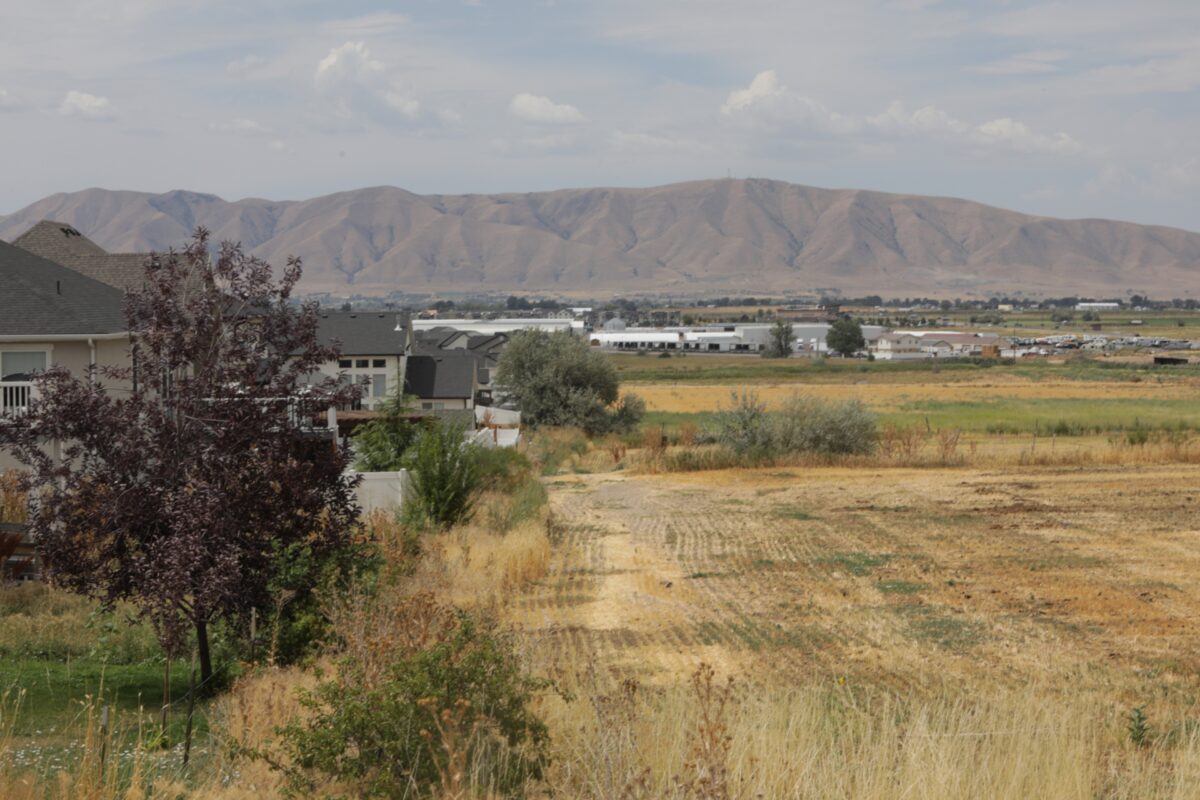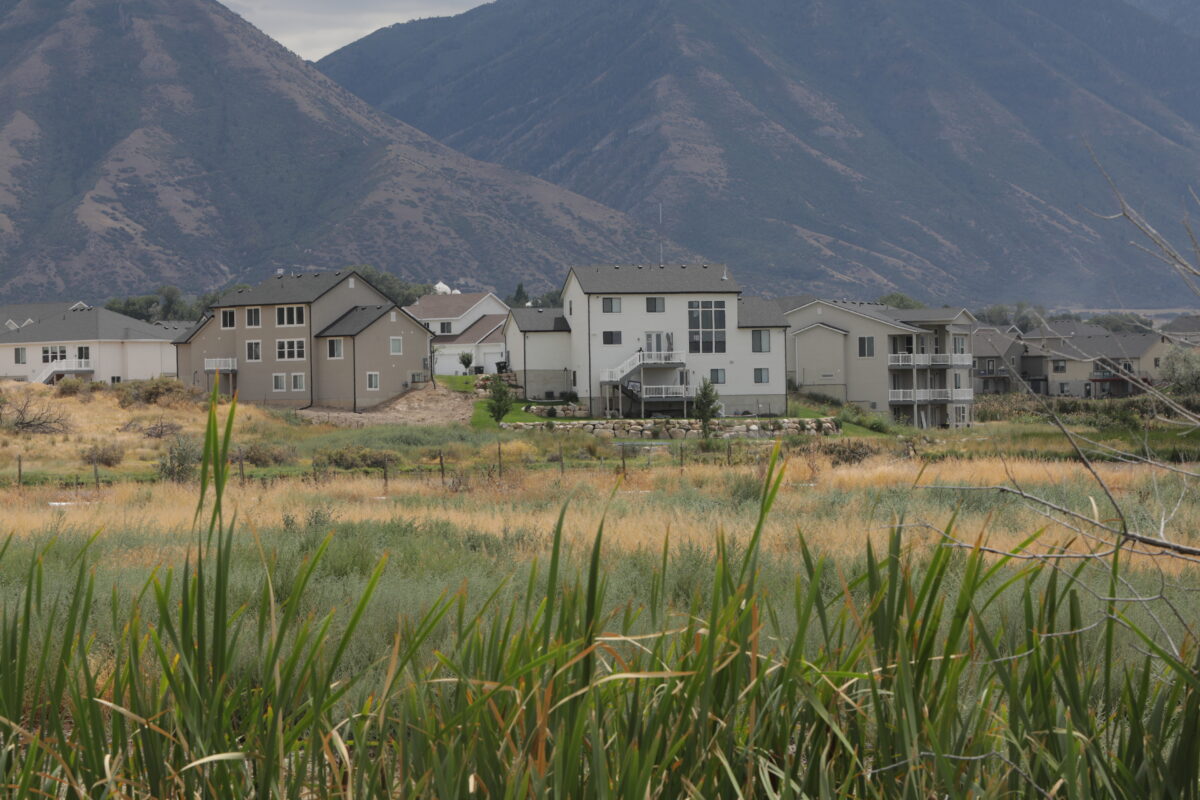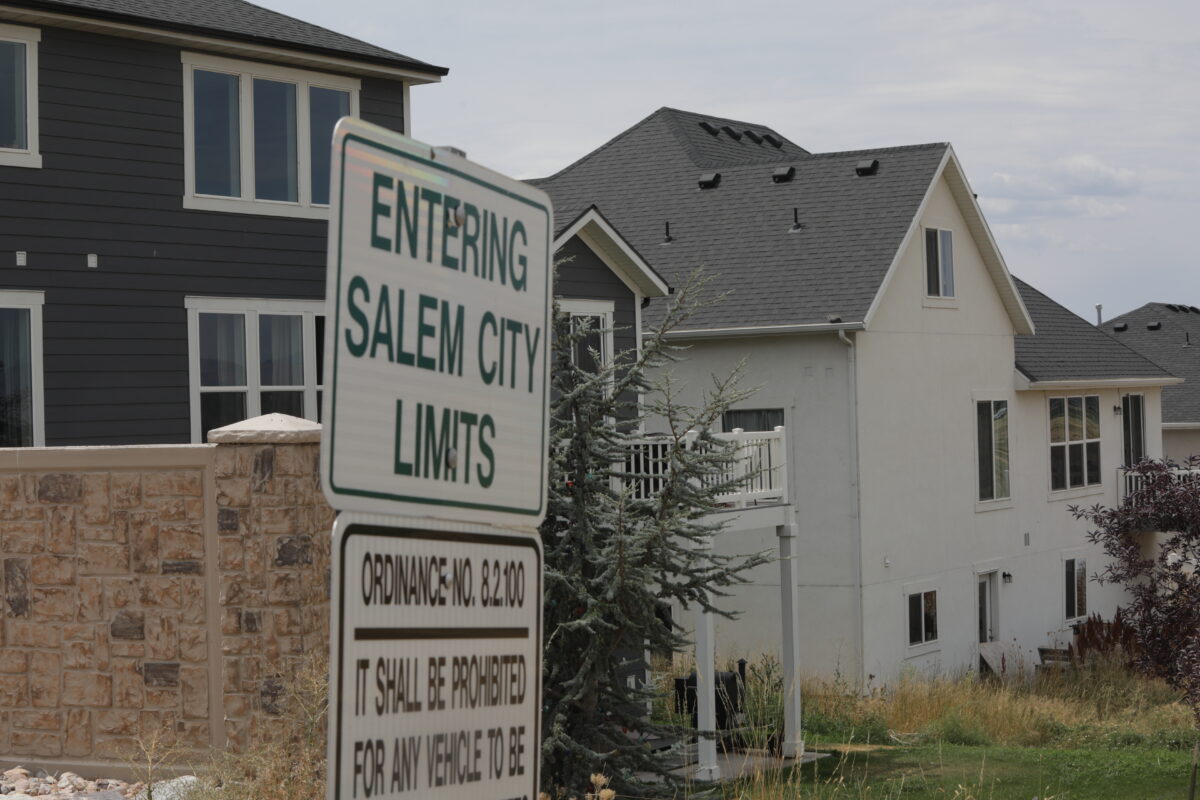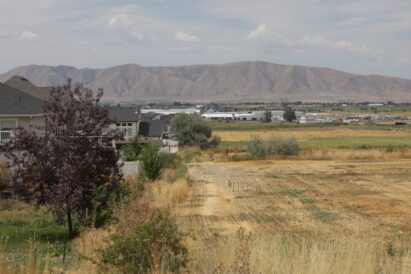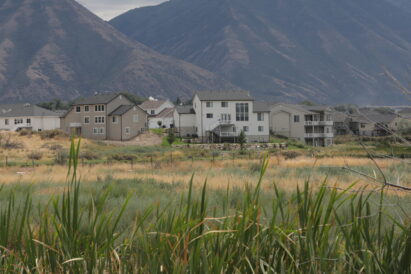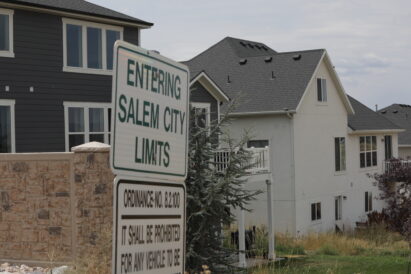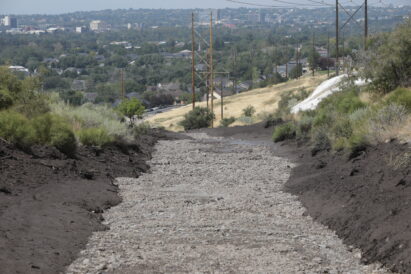Rocky Mountain Power proposing new transmission line in Utah County; some residents cast concerns
- The boundary of Salem and Spanish Fork where a power line is proposed to go is pictured Friday, Aug. 15, 2025.
- The Salem Park neighborhood is pictured from Spanish Fork on Friday, Aug. 15, 2025.
- The Salem City boundary sign in pictured Friday, Aug. 15, 2025.
Rocky Mountain Power is proposing to build a 45-mile-long, 345-kilovolt transmission line from the Spanish Fork substation in Mapleton to the Mercer substation in Eagle Mountain, a project which the company said will provide additional capacity to aid in serving load growth in the state while increasing overall system reliability.
The proposal has caught the ire of some residents who will be impacted by installation of the transmission line, which is planned to include 90 to 135-foot poles and travel west from Spanish Fork to West Mountain, then wrap around the south end of Utah Lake before extending north.
A particular point of contention lies at the Salem Park neighborhood of Salem City, which falls on the border of Spanish Fork. Rocky Mountain Power’s preferred transmission route does not go through any property in the neighborhood — or anywhere else in Salem — but straddles the eastern and northern fence line of the residential area while remaining in Spanish Fork.
Salem Park residents feel they were given inadequate notice about a project they believe will impact the surrounding environment and property values of their homes.
Christopher Blythe said the community was not notified of the proposal until Monday, Aug. 11, when they received a letter from Utah County that offered notice to “adjoining property owner or interested party” about a Utah County planning commission meeting that will be held on Tuesday, Aug. 19, to consider a conditional use application request from Rocky Mountain Power to build the transmission line through unincorporated Utah County.
“We just learned about this (last Monday),” Blythe said. “There have been talks about a year ago, I understand, where they said maybe something like this would happen. But if you look at the route of these power lines, they don’t need to come into our residential area at all. The line is 45 miles, and if you look at that path, the only time it comes into a residential neighborhood is Salem Park.”
Rocky Mountain Power spokesperson David Eskelsen said public hearings were held about the project last year to discuss the power line, including one in Salem. He said customers within 600 feet of the proposed line alignment received notices and were invited to the public hearings.
“It’s not surprising that some people are just now finding out about it. But we have diligently tried to contact people along the line route and let them know of the proposed power line project,” Eskelsen said.
Salem Park resident Kevin Kutterer said he believed the neighborhood did not receive direct notice, though, because they are not Rocky Mountain Power customers.
In an email exchange between Kutterer and Rocky Mountain shared with the Daily Herald, Kutterer said the entire neighborhood not knowing about the project was evidence of Rocky Mountain’s failure to create public engagement, and that community members should have been noticed individually.
In part of a response to Kutterer, Rocky Mountain emailed, “The mayor of Salem, Utah and Utah County officials have been contacted multiple times to review project information, so your local representative government has also been apprised of the project plans as well. … The company also provided community meetings and an online virtual meeting to discuss this project with those in your community.”
The power line’s impact
Eskelsen said the purpose of the line is to create an extra path for delivery between Utah County and Salt Lake County, and that increasing the bulk reliability will benefit reliability on a local level. The line will also accommodate future population growth, Eskelsen added, creating a long-term capacity.
Rocky Mountain Power’s website added that it will provide backup to the existing double-circuit 345 kV lines connecting Utah and Salt Lake counties that the existing 138 kV lines in Utah County would not be able to meet.
One area the power line is proposed to go through is Benjamin, an unincorporated farming community north of Payson.
A Benjamin resident who asked to remain anonymous said Utah County purchased his home from him six months ago, but did not go into further detail about the acquisition. A search of Utah County land records confirmed the county purchased the property.
The man said the power line will be built through the property, and shared a tone of resignation.
“What can we do?” he said. “There’s a lot more people that are going to benefit from it than me … It’s what they call progress.”
His comments reflect an issue entities face when it comes to development: how is the negative impact of a project to an individual property owner weighed against the positive effect it will have for a larger mass of people?
Eskelsen said when Rocky Mountain Power maps out a new power line they do take into account what route will least impact people and property.
“We understand that these lines are large and can be intrusive,” he said. “But they are necessary as electric systems grow to serve the growing needs of customers.”
Rocky Mountain Power obtains land rights to build power lines through right-of-way acquisition. Utah County land records show that PacifiCorp, Rocky Mountain Power’s parent company, acquired the right-of-way easements to certain properties along the proposed transmission route as early as 2013.
Eskelsen said the process will continue in the coming months.
“We still have to undergo more right-of-way acquisition,” Eskelsen said. “We have to talk to landowners as we settle on a specific route, and again, we’ve been talking to some landowners. We expect the right-of-way acquisition to continue well into next year.”
Seeking a voice
Though the power line will not go through the Salem Park neighborhood, property owners there believe they are still stakeholders due to the proximity of the line, and feel they were overlooked in the decision-making process.
Their list of objections were noted in an “evidence-based rebuttal” created by the Protect Salem Park Residents and Wildlife Coalition.
In the documents, residents argued of the ecological impact to the Salem Park wetlands located next to the neighborhood, which it said is home to protected species.
They listed fire hazards and health risks, among other claims, and said Rocky Mountain omitted Salem City in its Q-and-A planning materials for the project; that it lacked transparency in determining impacted areas and compensation and offered insufficient public notification.
Residents also feel let down by governmental officials they’ve reached out to for support.
“Nobody wants to take responsibility,” Blythe said. “It’s all out of their hands. They’re telling us to talk to the business that they’re giving the easement to, as if they would have any concern for us at all. They’re the people that are supposed to protect our rights, not the big business that’s supposed to make money.”
In an email shared with the Daily Herald, one Salem city council member responded to an inquiry from Christine Blythe on why Salem did not notify residents of the project.
The council member said because the power lines are outside of the city limits and unrelated to Salem’s power source, the city has “little impact on the decision-making process and must be careful not to interfere with county and state protocol.”
A Utah County spokesperson told the Daily Herald that the county is not involved in the project, and did not determine the alignment of the transmission line.
Utah County said the conditional use permit process is required under the Utah County Land Use Ordinance, and that the approval applies only to properties located in unincorporated Utah County where the transmission line is proposed.
Tuesday’s planning commission meeting will occur at 5:30 p.m. at the commission chambers in Provo.
Eskelsen said Rocky Mountain Power is currently in the middle part of the overall process, and will continue obtaining the local and state permitting in the coming months. The timeline is to begin construction in the summer of 2026 and begin servicing the line in March 2028.

